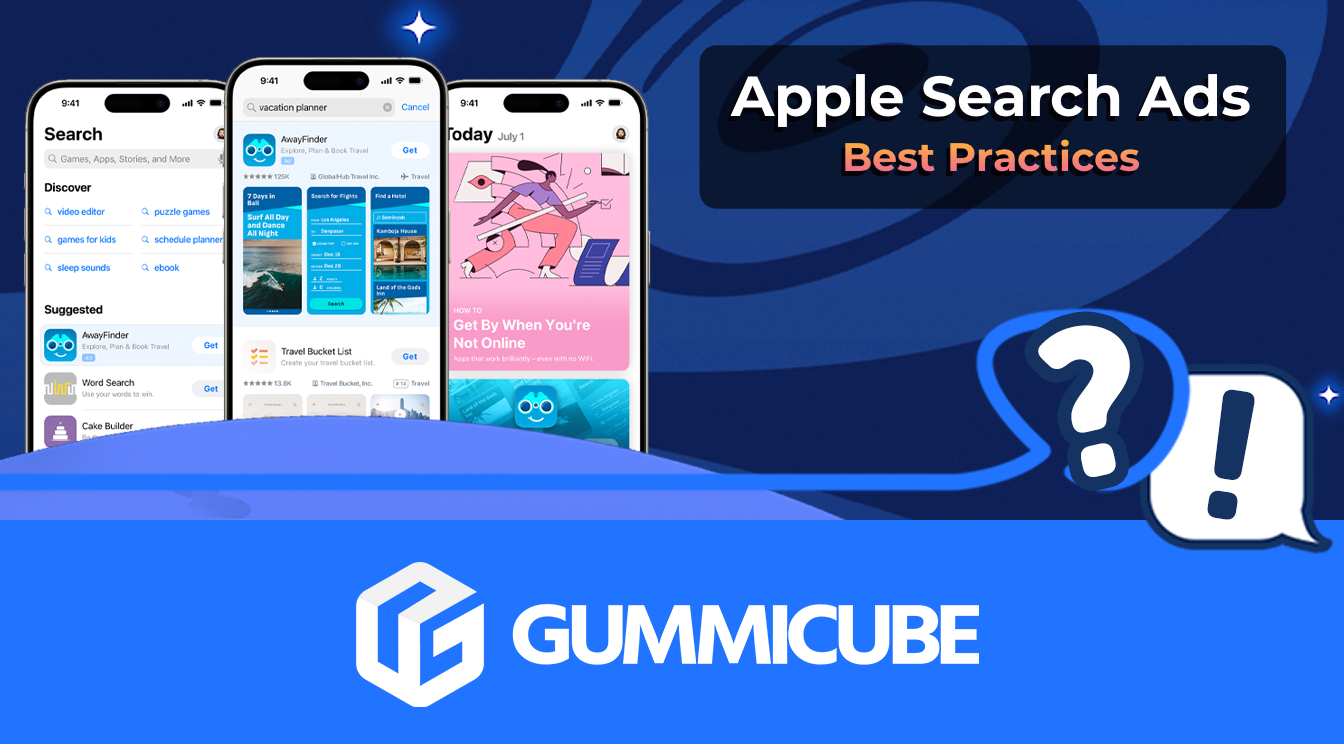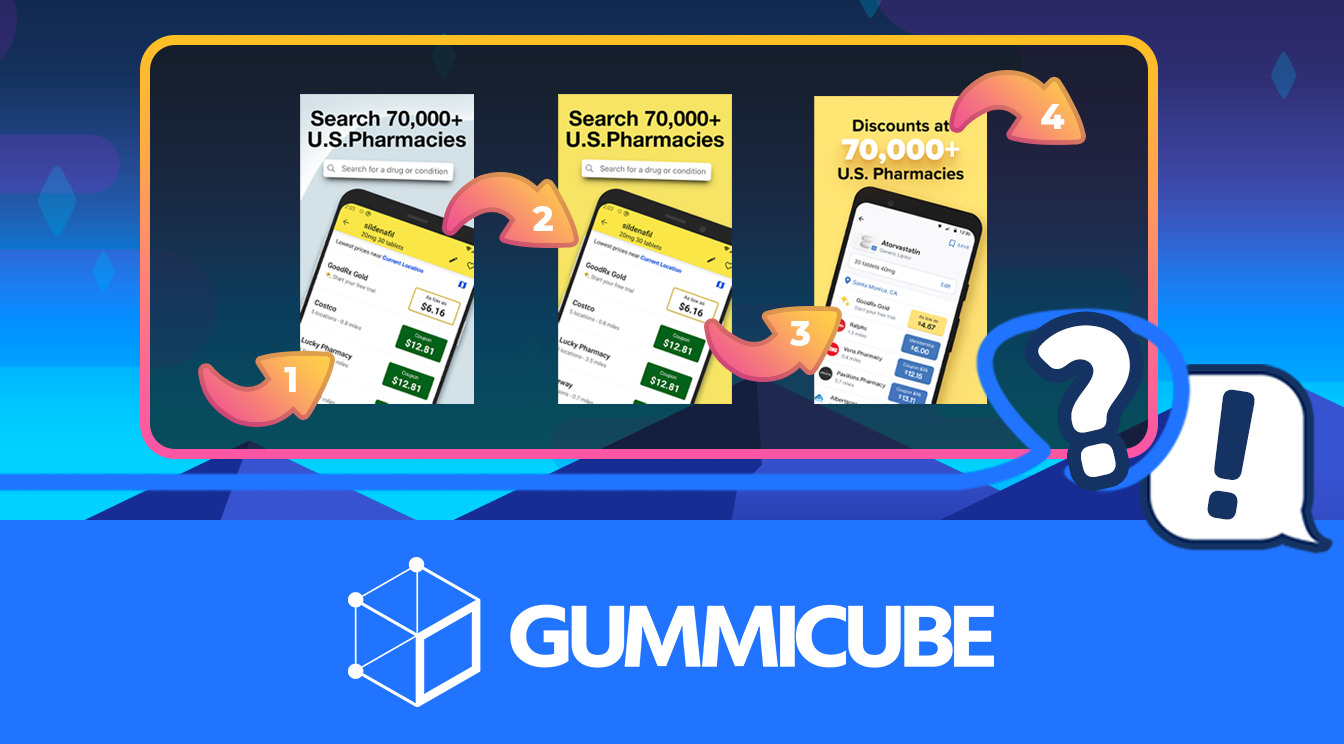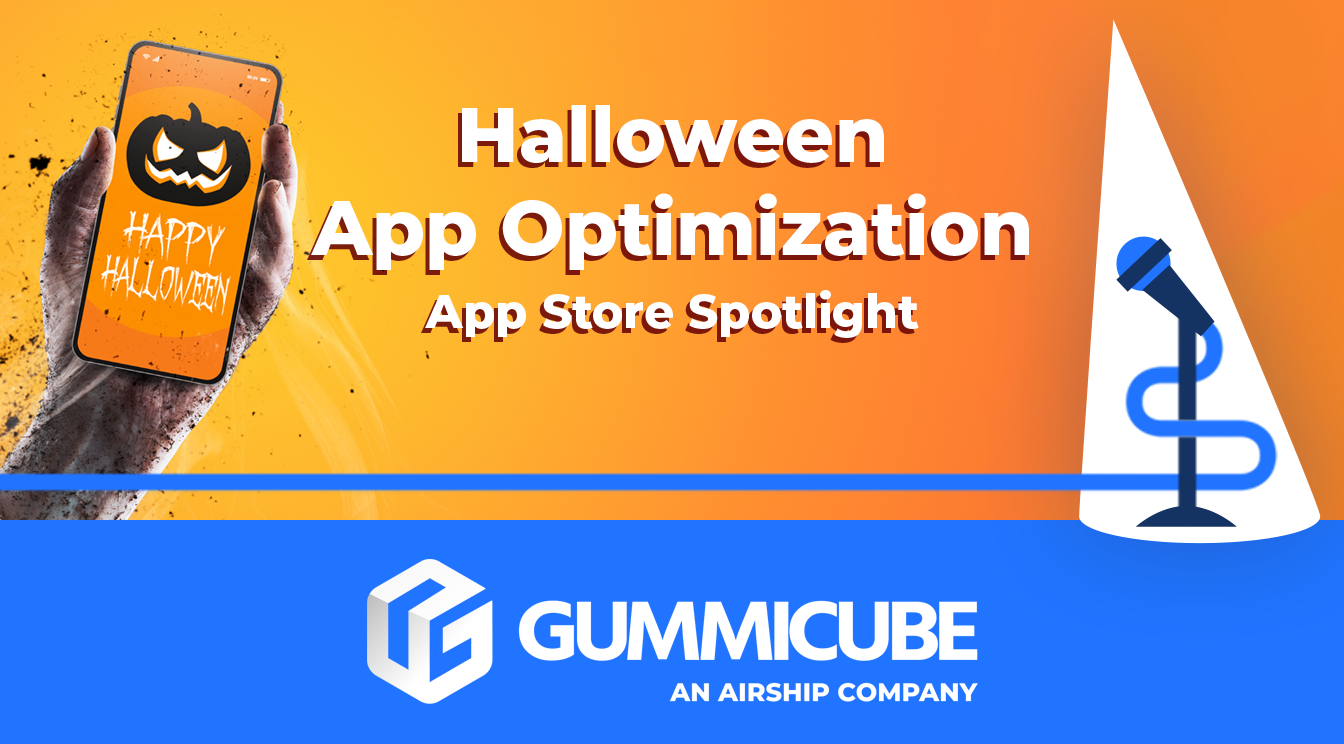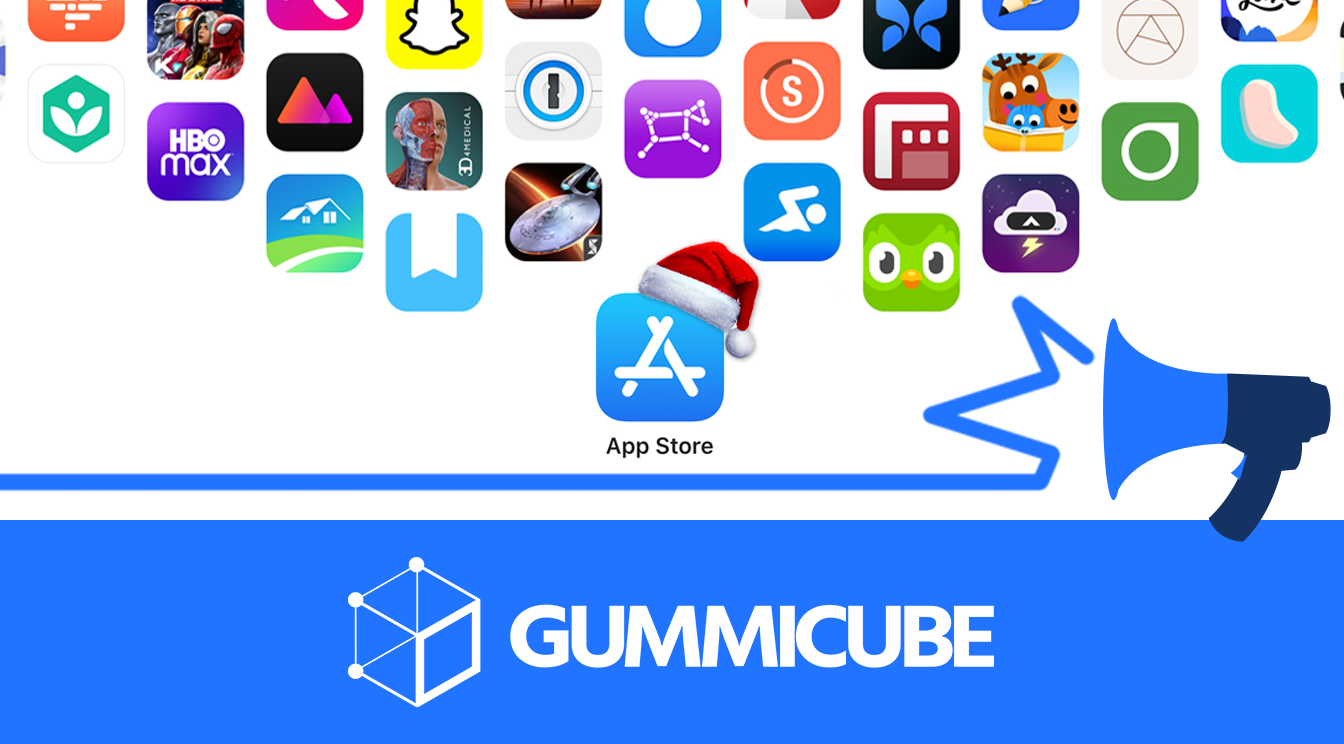
5 Best Practices for Apple Search Ads
Posted on July 3rd, 2024
Are you leveraging Apple Search Ads the right way? Take a look at these recommendations to optimize your paid campaigns and target the right users.

When it comes to ASO, it is never a one-and-done process. If you want to remain competitive with downloads and high keyword rankings, you should always be striving to improve. Every improvement made comes from building upon prior knowledge, strengthening the foundation of any ASO strategy.
Iteration is one of the ASO best practices that can help apps stay competitive as trends change. So how can iterative updates help an app stay fresh? Each iteration provides opportunities to hone improvements and discover new insights or tests for optimization. From creative sets to metadata, iteration can improve every step of App Store Optimization.
How can you tell if your creative set is in need of improvement? No matter how strong you may think an element is, there is always room to test and grow. This is why each successive deployment should build upon the success of the previous ones.
Creative sets are the most important drivers for conversion on both the iOS App Store and the Google Play Store. Developers on both platforms can and should A/B test variations on creative elements to see what users convert on. So long as tests are done in measurable ways where one element is changed at a time, its impact can be measured and incorporated into how the next round of creatives will take shape. Every test provides valuable insight into what users do and do not prefer, and if done in a measurable way, all results are will be actionable, good results that can be carried over into your next set. An iterative approach to creatives will also provide you with data for updating the design treatments of other marketing collateral for testing new designs there.
Once each test has accrued sufficient data to return actionable insight, results should be applied to the creatives for the next update. Every subsequent iteration incorporates the insights gleaned from prior tests to optimize creative sets that can convert even more users. This widens the funnel as much as possible to help convert the widest range of users, thus improving performance and profits exponentially.
Iterating allows you to find creatives that can attract more users. A/B testing new creative variants provides opportunities to find ones that bring in more conversions than existing sets. Leaving creative sets to stagnate only hurts your chances of attracting new users, and without iteration you will never have the chance to discover what works best.
Iteration can help with more than just improving conversion, but can also help discover new keyword opportunities to improve visibility. After each indexation period, highly performant keywords can be kept for further use, while under-performing terms can be removed to make space for new opportunities.
When selecting a keyword for inclusion in metadata, relevance is always the most important factor. Using ASO tools, determine what new keywords your competitors rank for, or which new competitors appear for keywords that matter to you. If the results for a term you are targeting are not relevant for your app, it is a good candidate for removal from your keyword field. Relevant keywords attract users who are more likely to actually want to use your app long-term.
By finding less relevant terms, and terms that are not contributing to search visibility, you can have a starting point for which keywords to remove. From there, research which keywords your app is relevant for that you are not targeting to test new keywords with the space you’ve freed up, while maintaining what works well and using it as a starting point for the types of terms you want to target. Through regular adjustment of the keyword field after this indexation period, you can build out an optimal set of keywords over time and understand what has and has not historically worked out.
Iteration also allows an app to maintain fresh metadata, thus avoiding stagnation. Each time metadata changes are released to the app stores, their respective app store algorithms are “told” that the app must be reindexed to glean the most recent and pertinent information. It can take 30-45 days to fully index for new metadata; any sooner and the app may not have fully indexed, any later and the app may show declines as competitors update and are crawled by Apple and Google for new terms.
An app can only target so many keywords in each update, so it takes successive iterations to increase ranking for multiple terms. Given enough time and iterations an app has the potential to rank for up to thousands of diverse keywords and phrases.
The mobile app market falls prey to fads and fashions just like any other industry. What may be outrageously popular one day could fall out of favor a few months later. Furthermore, cyclical trends like seasonality can set a rhythm for when certain treatments or keywords will be popular during certain times of the year. Iteration is key to capitalizing on new trends while they are hot and building momentum for seasonal trends ahead of the game.
A successful ASO agency can help you integrate fast trends with predictable seasonality seamlessly. By starting with a solid foundation, more daring experimentation can be pulled off with better results- but the key is to first establish that solid foundation before throwing out radical changes. Of course, if you have been iterating regularly then the framework for what your specific demographic converts well on should be well established.
When approaching seasonal events with such a foundation, experimenting with tried-and-true treatments that proved successful in prior years should be the first step. For example, if market research and prior experimentation suggests that a green screenshot background has driven conversion for your app from Thanksgiving through Christmas, then this should be applied first as a brief test to confirm and then live. Shortly after a positive impact is noted from the live deployment, a few trending elements can be run as A/B tests, such as holiday imagery or messaging.
Once the seasons change, the next iterations can adjust accordingly while building upon the last update’s successes.
App Store Optimization is an ongoing process that shouldn’t be approached with a “set it and forget it” mindset. Truly optimizing an app to bring out its best requires extensive research and updates over time. As an added benefit, once an extremely solid foundation has been built up by regular testing, new and exciting design treatments and keywords can be experimented with- so long as they are done in a measurable and actionable way. In order to get to that level, you must start with a well-defined plan and the hard work necessary to understand exactly what your users like best.
Want to learn more about App Store Optimization? Contact Gummicube and we’ll help get your strategy started.

Are you leveraging Apple Search Ads the right way? Take a look at these recommendations to optimize your paid campaigns and target the right users.

Ghostly happenings are among us... and in your app listing too? If you aren't leveraging the power of app seasonality to make relevant tweaks to your store listing you're leaving precious engagement and conversions on the table.

Developers on the iOS App Store should plan in advance of the upcoming Holiday Schedule to allow enough time for apps to get approved during the busy holidays.